This article is more than 5 years old.
William Morris (1834-1896) is a towering figure in the artistic and cultural history of Victorian Britain. The multi-talented Morris was a poet, artist, and craftsman whose design influence persists to this day. Much of his work was in the decorative arts– textiles, furniture, stained glass, wallpapers, and book design. Morris is credited with founding the Arts and Crafts Movement of the late 19th century.
Much of Morris’s life’s work as an artist and thinker was devoted to counteracting what he viewed as the corrupting influence of the industrial revolution on craftsmanship in general. Morris and others looked back to the medieval guild system for a better model for the production of goods and the relationship between artisans and their society.
Late in his life Morris realized his longtime goal of setting up his own printing press, the Kelmscott Press, which would publish books of his design. The Kelmscott Press edition of the works of Chaucer was Morris’s most ambitious undertaking as a printer and designer. Begun in 1892, the Kelmscott Chaucer was finally completed just a few months before Morris’s death in 1896.
Morris also created his own typefaces, inspired by those of 15th century Venetian engraver Nicolas Jensen. The “Chaucer” typeface was designed specifically for this book.
The 87 illustrations were drawn by Morris’s longtime friend, the artist Edward Burne-Jones, and printed as woodcuts.
The Works of Geoffrey Chaucer was printed in an edition of 425 copies on paper, with 13 additional copies on vellum.
Wake Forest’s copy is on paper and is one of approximately 50 bound in blind-tooled white pigskin by Thomas Cobden-Sanderson at the Doves Bindery. The binding design is by Morris himself.
The library purchased its copy of the Kelmscott Chaucer in 1952 with funds from the endowment of Oscar T. Smith.

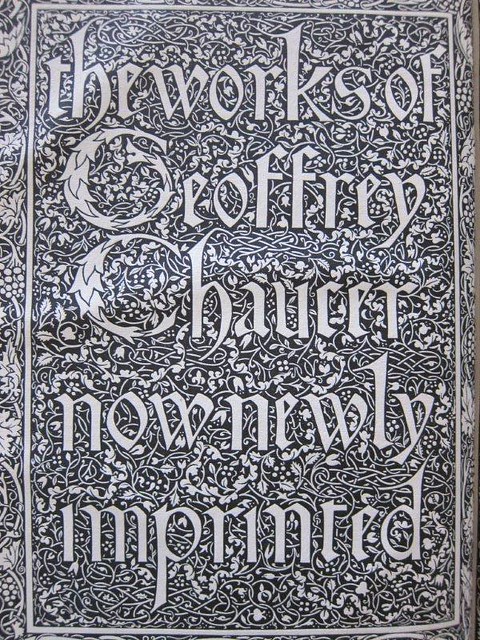
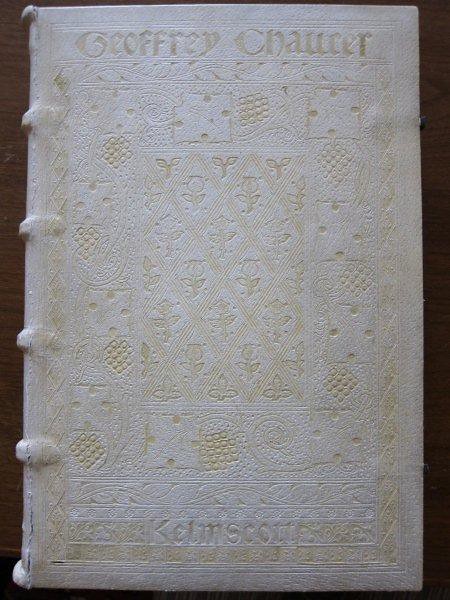
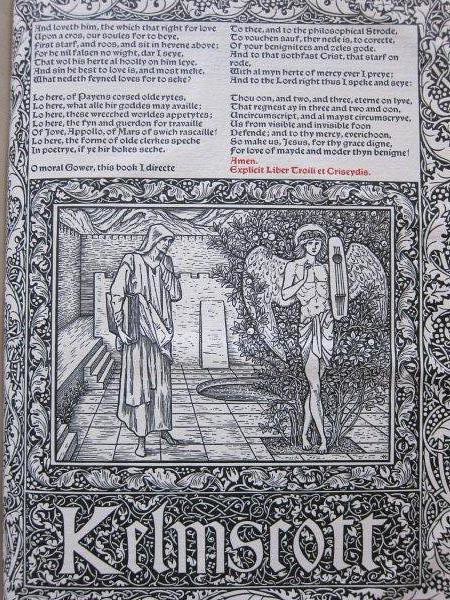
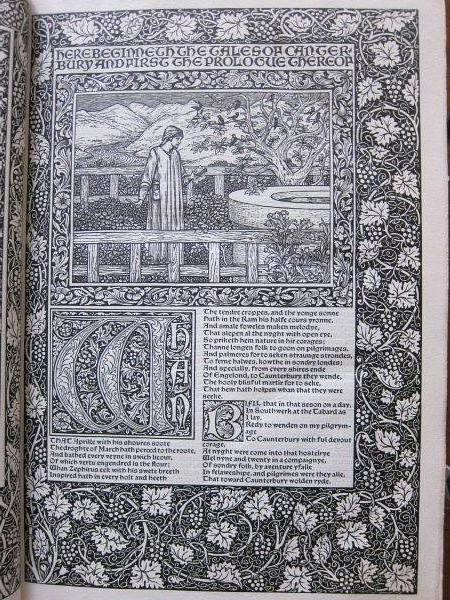
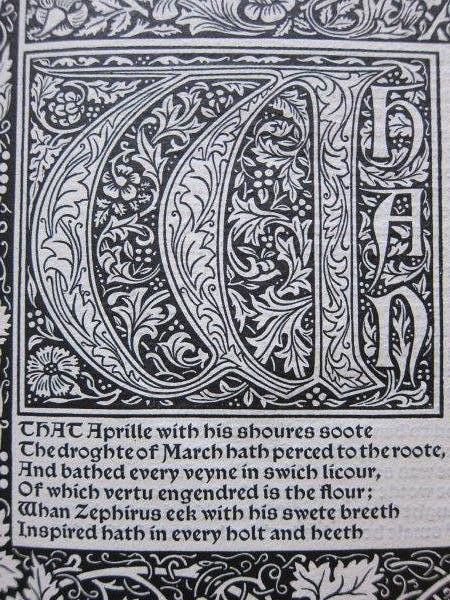
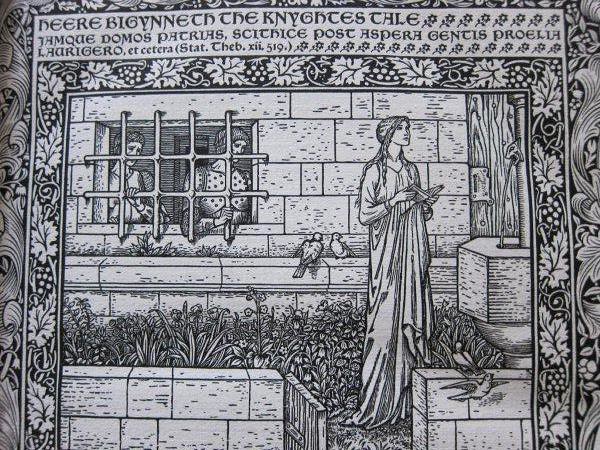
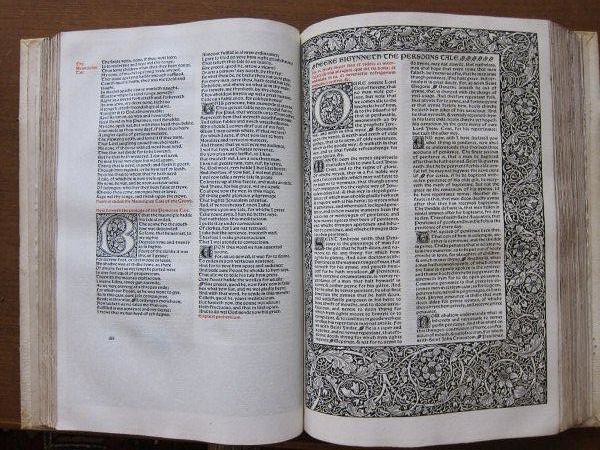


1 Comment on ‘The Works of Geoffrey Chaucer, printed by William Morris at the Kelmscott Press’
Excellent!